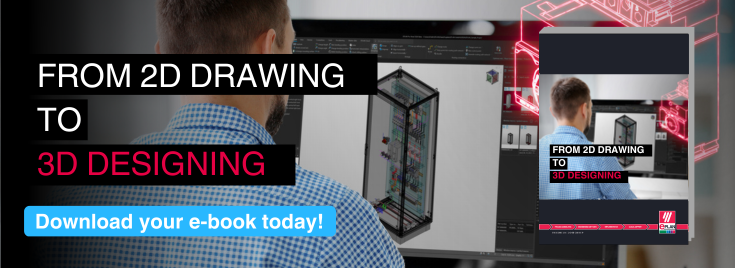Author
 Ian Greeves
Ian has been working at EPLAN UK for almost 3 years as an Applications Engineer. Ian has previously worked in the maintenance department and in the pre-production department, designing and building semi and fully automated machinery. He wants to use his engineering skills and expertise together with EPLAN to enable customers to simulate, validate and optimise their electrical design applications to achieve their goals
greeves.i@eplan.co.uk
Ian Greeves auf LinkedIn
Ian Greeves
Ian has been working at EPLAN UK for almost 3 years as an Applications Engineer. Ian has previously worked in the maintenance department and in the pre-production department, designing and building semi and fully automated machinery. He wants to use his engineering skills and expertise together with EPLAN to enable customers to simulate, validate and optimise their electrical design applications to achieve their goals
greeves.i@eplan.co.uk
Ian Greeves auf LinkedIn
How 3D design enables clear project delivery
To begin with, for the production process to run as optimally and efficiently as possible, it is important that any errors in the design are discovered as early as the work preparation stage. For those still using 2D drawings, this is always a major challenge, as paper drawings do not give all the necessary information about the space requirements and dimensions of components. Some details are simply missing, which can lead to mistakes further down the line.
For example, the translation of the flat drawing to the actual layout of a control cabinet to some extent always relies on the panel builder's own interpretation. In practice, this can lead to problems like components in the cabinet colliding with those on the door, or simply not fitting into the space allocated for them. Rectifying problems like these can lead to downtime, long delays and missed deadlines as well as increasing costs and cutting into profit margins.
Nevertheless, for the production process to run as smoothly as possible, high levels of co-operation between departments are essential. Unfortunately, this is not always the case, with departments in many companies working with their own systems and sharing information - relatively inefficiently - through PDF files and spreadsheets. This results in duplicate work and details that simply slip through the net, as each department then has to enter this information into their own system.
A good 3D design package will, however, provide a digital environment in which data can be easily shared between departments. This ensures that everyone is using a ‘single source of truth’ and that departments are freed from the burdens of duplicate work and data entry. In addition, all parties enjoy maximum visibility and traceability of different project stages or alterations.
As we’ve seen, 3D engineering software facilitates smooth data exchange between departments and even between companies and their suppliers. It can make everyone’s work easier by alleviating the burden of duplicated work and minimising the risk of errors. With budgets becoming tighter by the day, engineering companies wishing to remain competitive must adapt to new and efficient working methods or perish. Will yours be a victim or a success in the 3D revolution?

.png)

Comments